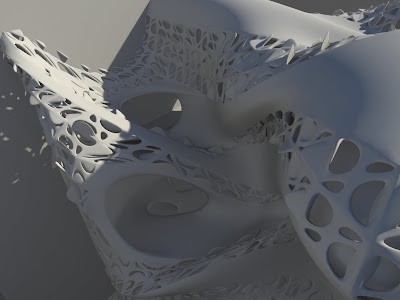
The task of this semester is the design of a store and exhibition space for collector’s items in Berlin.
The main lineage of exploration in this studio investigates how intensive forces, including solar radiation, weather systems, acoustic forces and wind pressures can be used as means of formation for architectural bodies. Using parametric tools in combination with simulation software results in opportunities to observe the behavior of architectural bodies under ecological pressure.

The architectural body, the launching pad for the investigations in the studio, is comprised by a toystore which is situated as an infill between two buildings in the urban texture of Berlin.
The studio focuses on the use of a contemporary language that includes concepts of architectural discourse. Two differentiating planes of thought form the basis for this semester: Intensive and extensive systems.

The first complex describes conditions in constant flux, gradually changing phenomena such as weather systems, maritime currents, solar radiation etc. all of this phenomena can be described as intensive forces. Extensive forces on the other hand are constant in their actual representation, they are measurable, eidetic, reduceable and divisible, such as a buildings, components, or the parts of any machine. In this extent the studio deals with both concepts in this project. On the one side the project is massively influenced by ecological pressures, on the other hand components adapt in a parametric fashion to this pressures.

The studio is driven by the desire to find a differentiated, alternative approach to surface population techniques mainly applying a twofold method oscillating between tactics of component accumulation and massing.
The component driven investigation is in particular informed by environmental pressures. These pressures serve as a testing bed for the behavior of architectural bodies and their economy of form. In this extent the design of the individual component proves to be crucial, as the simplicity of the components forms the trajectories of the universal, complex, reaction triggering the surface population and the effectivity of the design.

















































